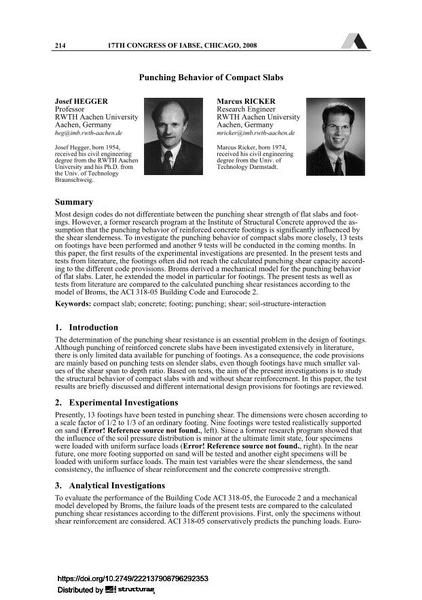Punching Behavior of Compact Slabs

|
|
|||||||||||
Détails bibliographiques
| Auteur(s): |
Josef Hegger
Marcus Ricker |
||||
|---|---|---|---|---|---|
| Médium: | papier de conférence | ||||
| Langue(s): | anglais | ||||
| Conférence: | 17th IABSE Congress: Creating and Renewing Urban Structures – Tall Buildings, Bridges and Infrastructure, Chicago, USA, 17-19 September 2008 | ||||
| Publié dans: | IABSE Congress Chicago 2008 | ||||
|
|||||
| Page(s): | 214-215 | ||||
| Nombre total de pages (du PDF): | 8 | ||||
| Année: | 2008 | ||||
| DOI: | 10.2749/222137908796292353 | ||||
| Abstrait: |
Most design codes do not differentiate between the punching shear strength of flat slabs and foot- ings. However, a former research program at the Institute of Structural Concrete approved the as- sumption that the punching behavior of reinforced concrete footings is significantly influenced by the shear slenderness [2],[3]. To investigate the punching behavior of compact slabs more closely, 13 tests on footings have been performed and another 9 tests will be conducted in the coming months. In this paper, first results of the experimental investigations are presented. In the present tests and tests from literature, the footings often did not reach the calculated punching shear capac- ity according to the different code provisions. Broms derived a mechanical model for the punching behavior of flat slabs. Later, he extended the model in particular for footings. The present tests as well as tests from literature are compared to the calculated punching shear resistances according to the model of Broms, the ACI 318-05 Building Code and Eurocode 2. |
||||
| Mots-clé: |
béton
|
||||
